 Technology peripherals
Technology peripherals
 It Industry
It Industry
 iFlytek: Huawei's Ascend 910B's capabilities are basically comparable to Nvidia's A100, and they are working together to create a new base for my country's general artificial intelligence
iFlytek: Huawei's Ascend 910B's capabilities are basically comparable to Nvidia's A100, and they are working together to create a new base for my country's general artificial intelligence
iFlytek: Huawei's Ascend 910B's capabilities are basically comparable to Nvidia's A100, and they are working together to create a new base for my country's general artificial intelligence
According to news from this site on October 22, in the third quarter of this year, iFlytek achieved a net profit of 25.79 million yuan, a year-on-year decrease of 81.86%; the net profit in the first three quarters was 99.36 million yuan, a year-on-year decrease of 76.36%.
Jiang Tao, vice president of iFlytek, revealed at the Q3 performance briefing that iFlytek has launched a special research project with Huawei Shengteng in early 2023, and jointly developed a high-performance operator library with Huawei to jointly create a new model of China's general artificial intelligence. The base allows domestic large-scale models to be built on independently innovative software and hardware.
He pointed out that the current capabilities of Huawei’s Ascend 910B are basically comparable to Nvidia’s A100. At the upcoming iFlytek 1024 Global Developer Festival, iFlytek and Huawei will make further joint announcements on the artificial intelligence computing power base.
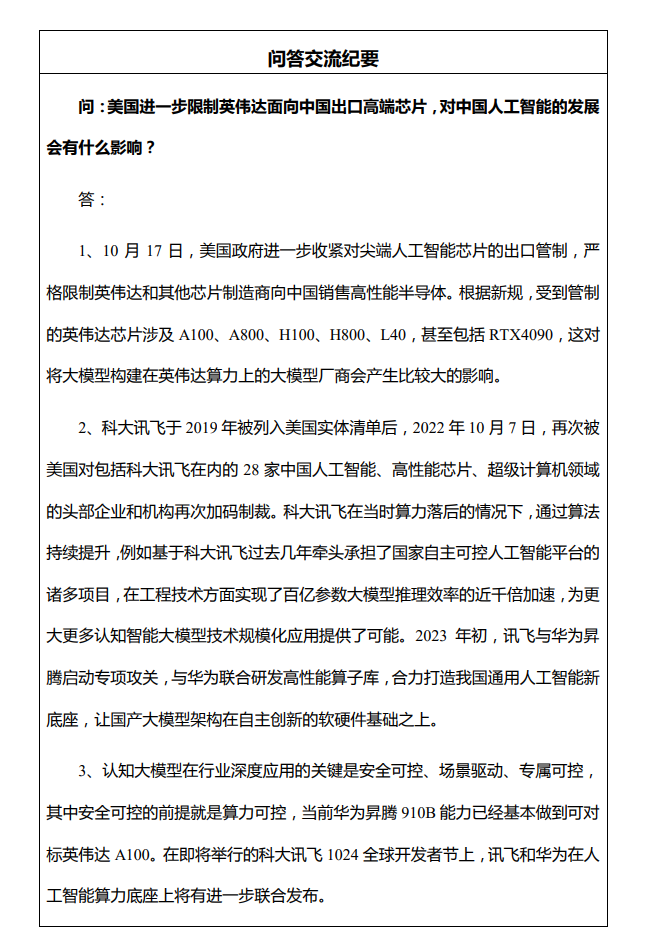
# He also mentioned that the company has been committed to achieving algorithm improvement and acceleration in engineering technology. After being included in the U.S. Entity List in 2019, the company was once again subject to U.S. sanctions on 28 leading Chinese companies and institutions in the fields of artificial intelligence, high-performance chips, and supercomputers, including iFlytek, on October 7, 2022. sanctions.
This site checked public information and found that HiSilicon Ascend 910 was released in 2019, and also launched the accompanying new generation AI open source computing framework MindSpore, and MindSpore has also been open sourced in 2020.
Currently, the Huawei Ascend Community has disclosed three models of Atlas 300T products, corresponding to Ascend 910A, 910B, and 910 Pro B, with a maximum power consumption of 300W. The AI computing power of the first two is 256 TFLOPS, while the 910 Pro B Up to 280 TFLOPS (FP16).

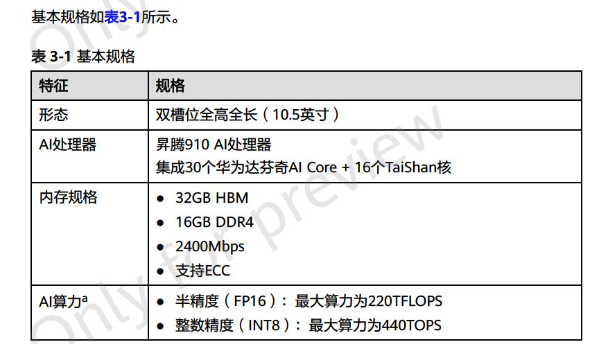
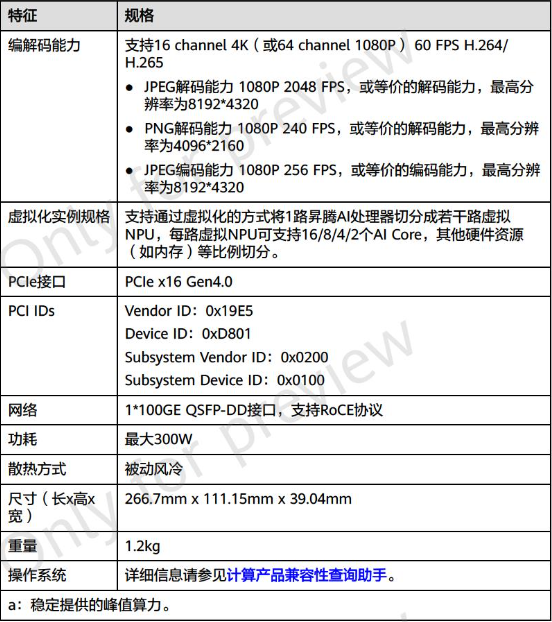
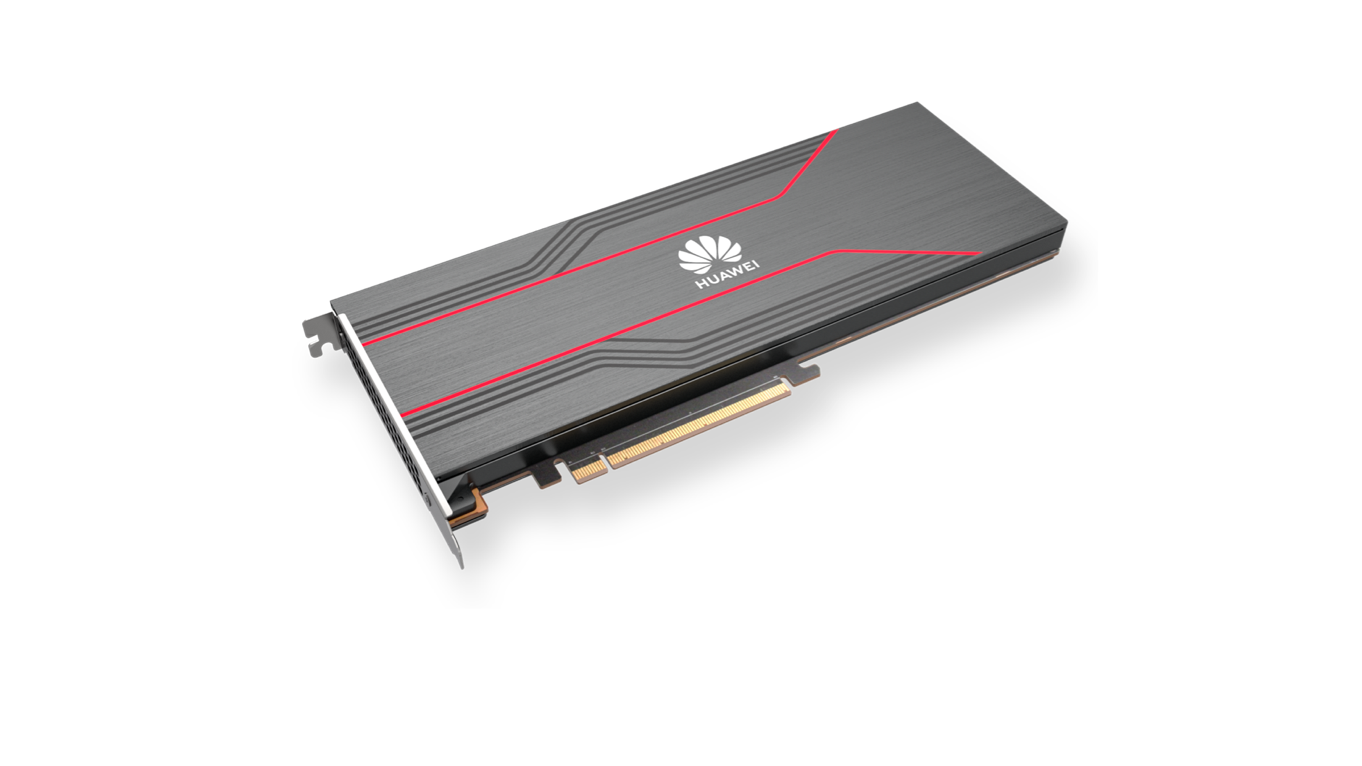
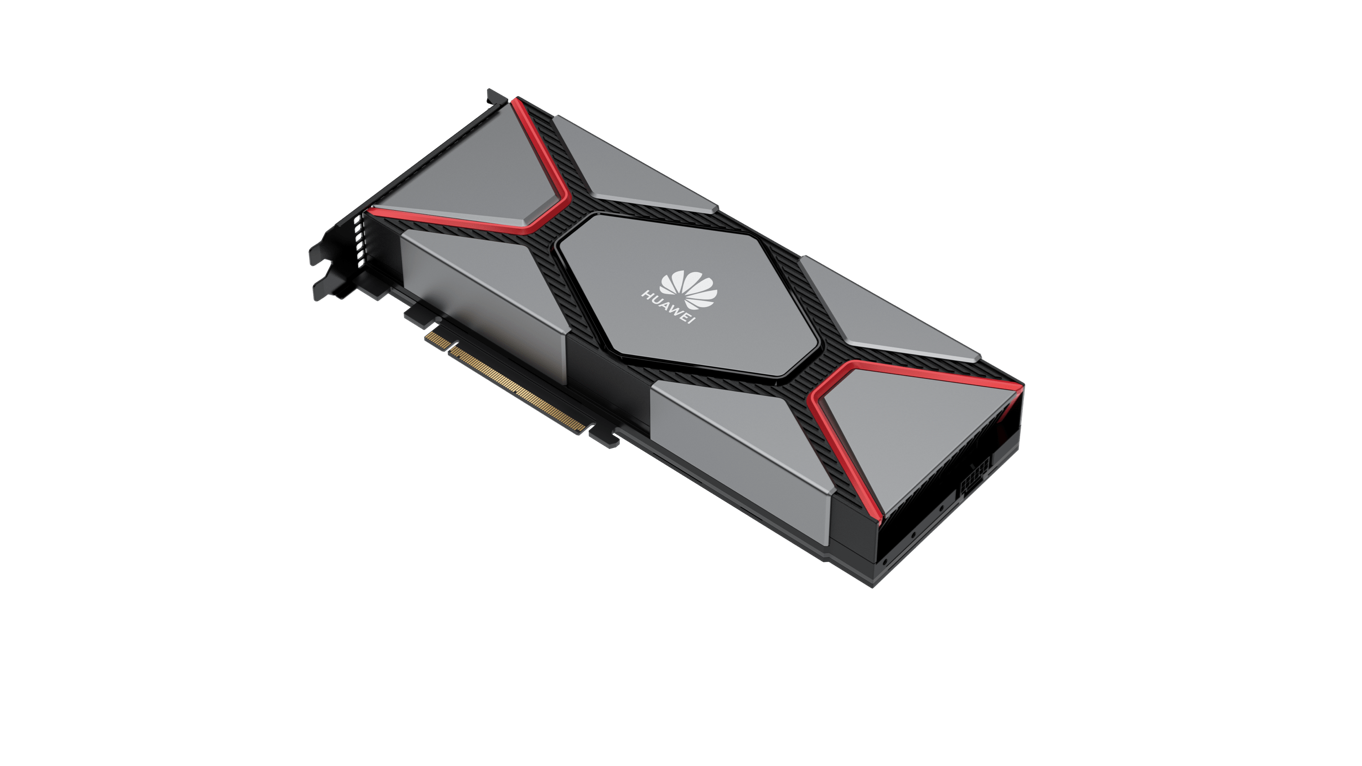
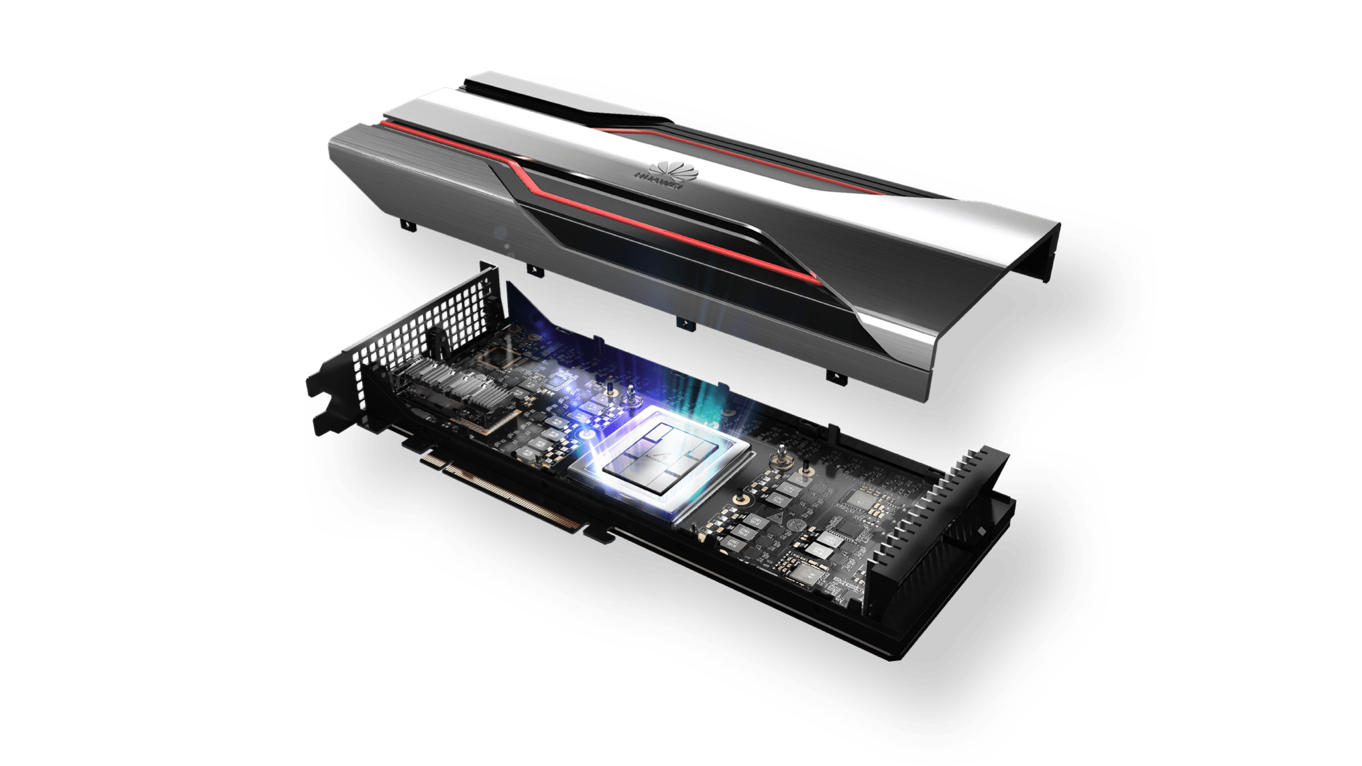
According to Huawei’s official specifications, Ascend 910 Pro B is about 18% slower than A100.
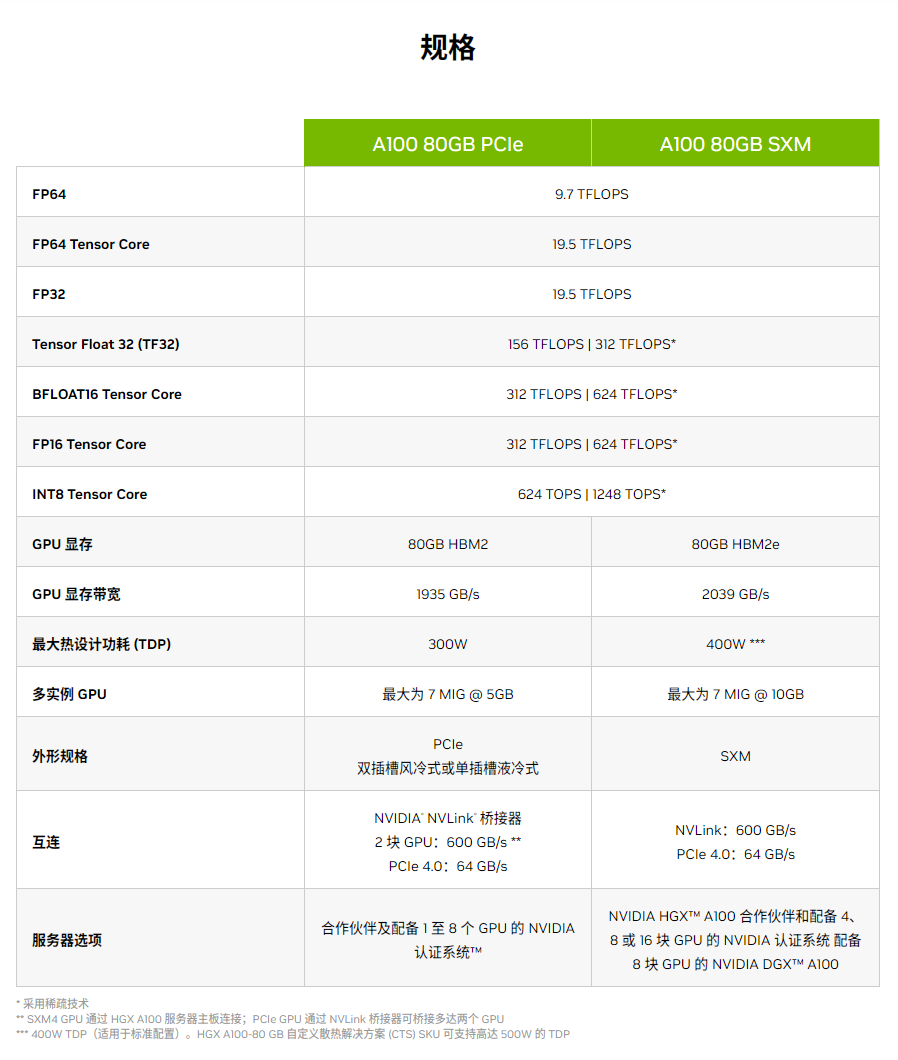
According to feedback from AI practitioners on Zhihu, even though Ascend 910B still has many minor problems, single card performance lags behind A800, and Arm ecosystem is lacking (should refer to CANN vs. CUDA), but
With the ban on Nvidia's advanced products, domestic manufacturers will be forced to choose Ascend. I believe that Ascend products will be more complete, and domestic manufacturers can also complete the replacement by stacking capacity and increasing the scale of computing power clusters, at least There is not much overall difference in the field of large model training.
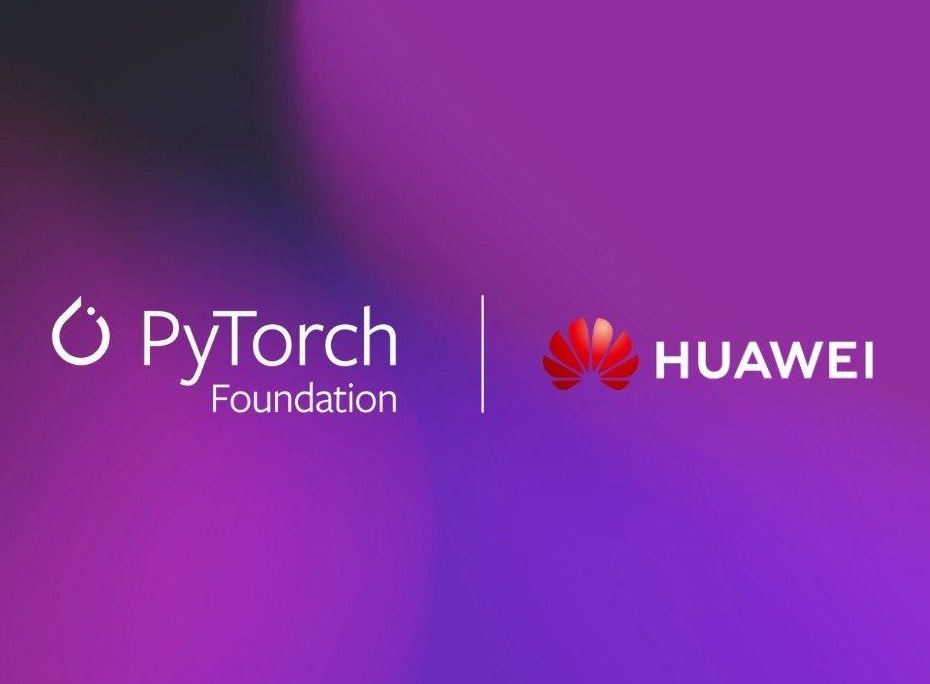
In addition, the latest 2.1 version of PyTorch has simultaneously supported Ascend NPU, and has updated a more complete third-party device access mechanism under the promotion of Huawei. Based on this feature, third-party AI computing devices can connect to the PyTorch framework without modifying the original framework code. Ascend also provides an officially certified reference implementation of Torch NPU, which can guide third-party devices to easily connect.
Based on the new version, users can directly enjoy the native PyTorch development experience on Ascend NPU, and obtain models and applications that run efficiently on Ascend computing devices.
Related reading:
"Huawei and iFlytek launch AI storage base joint innovation project"
"iFlytek Liu Qingfeng: Huawei GPU can benchmark NVIDIA A100, General large model will benchmark against GPT-4 in the first half of next year"
Advertising statement: The external jump links contained in the article (including but not limited to hyperlinks, QR codes, passwords, etc.) are used to deliver more Information, saving selection time, the results are for reference only, all articles on this site contain this statement.
The above is the detailed content of iFlytek: Huawei's Ascend 910B's capabilities are basically comparable to Nvidia's A100, and they are working together to create a new base for my country's general artificial intelligence. For more information, please follow other related articles on the PHP Chinese website!

Hot AI Tools

Undresser.AI Undress
AI-powered app for creating realistic nude photos

AI Clothes Remover
Online AI tool for removing clothes from photos.

Undress AI Tool
Undress images for free

Clothoff.io
AI clothes remover

AI Hentai Generator
Generate AI Hentai for free.

Hot Article

Hot Tools

Notepad++7.3.1
Easy-to-use and free code editor

SublimeText3 Chinese version
Chinese version, very easy to use

Zend Studio 13.0.1
Powerful PHP integrated development environment

Dreamweaver CS6
Visual web development tools

SublimeText3 Mac version
God-level code editing software (SublimeText3)

Hot Topics
 1378
1378
 52
52
 Yu Chengdong revealed that Huawei's tri-fold screen mobile phone will be unveiled in September: the price is not expected to be cheap
Aug 20, 2024 am 06:36 AM
Yu Chengdong revealed that Huawei's tri-fold screen mobile phone will be unveiled in September: the price is not expected to be cheap
Aug 20, 2024 am 06:36 AM
On August 19, Hongmeng held a delivery ceremony for the first batch of Xiangjie S9 owners in Shanghai. Huawei executive Yu Chengdong personally attended and delivered the vehicles to the owners. At the scene, a car owner who already owned Wenjie M5, M7, and M9 asked Yu Chengdong when he could buy Huawei's three-fold screen mobile phone. Yu Chengdong responded that it would be available next month. Fenyefenye Previously, real shots of what appeared to be Huawei's three-fold screen phone had leaked on the Internet, causing widespread concern. In the picture, the new phone held by Yu Chengdong shows extraordinary visual impact. Its screen size is far larger than that of conventional folding screen mobile phones. It has a unique design and is not a tablet but is better than a tablet. There is a central hole-punch camera inlaid on the top of the left side, as well as a vaguely visible double-fold design. The side of the phone is suspected to be equipped with a stylus. These clues all point to this
 The best time to buy Huawei Mate 60 series, new AI elimination + image upgrade, and enjoy autumn promotions
Aug 29, 2024 pm 03:33 PM
The best time to buy Huawei Mate 60 series, new AI elimination + image upgrade, and enjoy autumn promotions
Aug 29, 2024 pm 03:33 PM
Since the Huawei Mate60 series went on sale last year, I personally have been using the Mate60Pro as my main phone. In nearly a year, Huawei Mate60Pro has undergone multiple OTA upgrades, and the overall experience has been significantly improved, giving people a feeling of being constantly new. For example, recently, the Huawei Mate60 series has once again received a major upgrade in imaging capabilities. The first is the new AI elimination function, which can intelligently eliminate passers-by and debris and automatically fill in the blank areas; secondly, the color accuracy and telephoto clarity of the main camera have been significantly upgraded. Considering that it is the back-to-school season, Huawei Mate60 series has also launched an autumn promotion: you can enjoy a discount of up to 800 yuan when purchasing the phone, and the starting price is as low as 4,999 yuan. Commonly used and often new products with great value
 Apple and Huawei both wanted to make a buttonless phone, but Xiaomi made it first?
Aug 29, 2024 pm 03:33 PM
Apple and Huawei both wanted to make a buttonless phone, but Xiaomi made it first?
Aug 29, 2024 pm 03:33 PM
According to a report from Smartprix, Xiaomi is developing a buttonless mobile phone codenamed "Suzaku". According to this news, this mobile phone codenamed Zhuque will be designed with an integrated concept, use an under-screen camera, and be equipped with Qualcomm Snapdragon 8gen4 processor. If the plan does not change, we are likely to see its arrival in 2025. When I saw this news, I thought I was back in 2019 - at that time, Xiaomi released the Mi MIX Alpha concept phone, and the surround-screen button-less design was quite amazing. This is the first time I have seen the charm of a buttonless mobile phone. If you want a piece of "magic glass", you must first kill the buttons. In "The Biography of Steve Jobs", Jobs once expressed that he hoped that the mobile phone could be like a piece of "magic glass".
 Huawei will launch the Xuanji sensing system in the field of smart wearables, which can assess the user's emotional state based on heart rate
Aug 29, 2024 pm 03:30 PM
Huawei will launch the Xuanji sensing system in the field of smart wearables, which can assess the user's emotional state based on heart rate
Aug 29, 2024 pm 03:30 PM
Recently, Huawei announced that it will launch a new smart wearable product equipped with Xuanji sensing system in September, which is expected to be Huawei's latest smart watch. This new product will integrate advanced emotional health monitoring functions. The Xuanji Perception System provides users with a comprehensive health assessment with its six characteristics - accuracy, comprehensiveness, speed, flexibility, openness and scalability. The system uses a super-sensing module and optimizes the multi-channel optical path architecture technology, which greatly improves the monitoring accuracy of basic indicators such as heart rate, blood oxygen and respiration rate. In addition, the Xuanji Sensing System has also expanded the research on emotional states based on heart rate data. It is not limited to physiological indicators, but can also evaluate the user's emotional state and stress level. It supports the monitoring of more than 60 sports health indicators, covering cardiovascular, respiratory, neurological, endocrine,
 The price of Mate 60 is reduced by 800 yuan, and the price of Pura 70 is reduced by 1,000 yuan: Just wait until Huawei releases Mate 70!
Aug 16, 2024 pm 03:45 PM
The price of Mate 60 is reduced by 800 yuan, and the price of Pura 70 is reduced by 1,000 yuan: Just wait until Huawei releases Mate 70!
Aug 16, 2024 pm 03:45 PM
According to news on August 16, for current Huawei mobile phones, they are already working hard to clear the way for the launch of new models, so everyone has seen the prices of the Mate60 series and Pura70 series being reduced one after another. With Huawei officially announcing price cuts for the Mate60 series on August 15, the latest models of Huawei’s two flagship series have completed price adjustments. In July this year, Huawei officially announced that the Huawei Pura70 series would be on sale, with prices reduced by up to 1,000 yuan. Among them, Huawei Pura70 has a direct discount of 500 yuan, with a starting price of 4999 yuan; Huawei Pura70 Beidou Satellite News Edition has a direct discount of 500 yuan, with a starting price of 5099 yuan; Huawei Pura70Pro has a direct discount of 800 yuan, with a starting price of 5699 yuan; Huawei Pura70Pr
 2024Q2 Global Mobile Programmatic Advertising Report: Apple iPhone leads the way with 51% voice share, followed by Samsung, Huawei and Xiaomi
Aug 22, 2024 pm 02:05 PM
2024Q2 Global Mobile Programmatic Advertising Report: Apple iPhone leads the way with 51% voice share, followed by Samsung, Huawei and Xiaomi
Aug 22, 2024 pm 02:05 PM
According to news from this website on August 22, market research agency Pixalate released a report yesterday (August 21), stating that in the global mobile programmatic advertising market, Apple ranked first with a share of voice (SOV) of 51%. Explanation of related terms: This site briefly introduces the proper terms: Programmatic Advertising: Programmatic advertising refers to the use of advertising technology to purchase and sell digital advertising. Programmatic advertising can show your audience relevant ads through automated steps in less than a second. Share of Voice (SOV): Percentage of open programmatic ad sales related to specific device types in each region, as measured by Pixalate
 Huawei offers discounts on Mate X5 and other models, with prices reduced by up to thousands of yuan
Aug 29, 2024 pm 03:32 PM
Huawei offers discounts on Mate X5 and other models, with prices reduced by up to thousands of yuan
Aug 29, 2024 pm 03:32 PM
On August 29, Huawei Terminal officially announced that the Huawei Pioneer Thanksgiving Feedback Season has begun! Buy Huawei MateX5, Huawei Pocket2, Huawei novaFlip, Huawei Pura70 series, and Huawei Mate60 series immediately to enjoy purchasing privileges. However, Huawei officials did not elaborate on the specific rights and interests of the "purchase privileges". 1. Huawei Mate , limited to 10 o'clock/16 o'clock/20 o'clock, order placed every hour
 The world's first three-fold screen! Huawei Mate XT screen supplier exposed
Sep 03, 2024 pm 06:34 PM
The world's first three-fold screen! Huawei Mate XT screen supplier exposed
Sep 03, 2024 pm 06:34 PM
According to news on September 3, today, Huawei Terminal announced a new member of the Extraordinary Master series-MateXT. Huawei's Yu Chengdong forwarded this Weibo, and the mobile phone he used was the MateXT Extraordinary Master. It is reported that Mate Blogger Digital Chat Station hinted that the screen supplier for Huawei’s new MateXT Extraordinary Master product is BOE, which is also the first screen factory in the industry to mass-produce three-folding screens. Previously in August this year, Yu Chengdong was photographed using a three-fold screen mobile phone on an airplane. Judging from the exposed pictures, Huawei's three-fold screen mobile phone is very thin. Huawei three-fold screen mobile phone 1.



